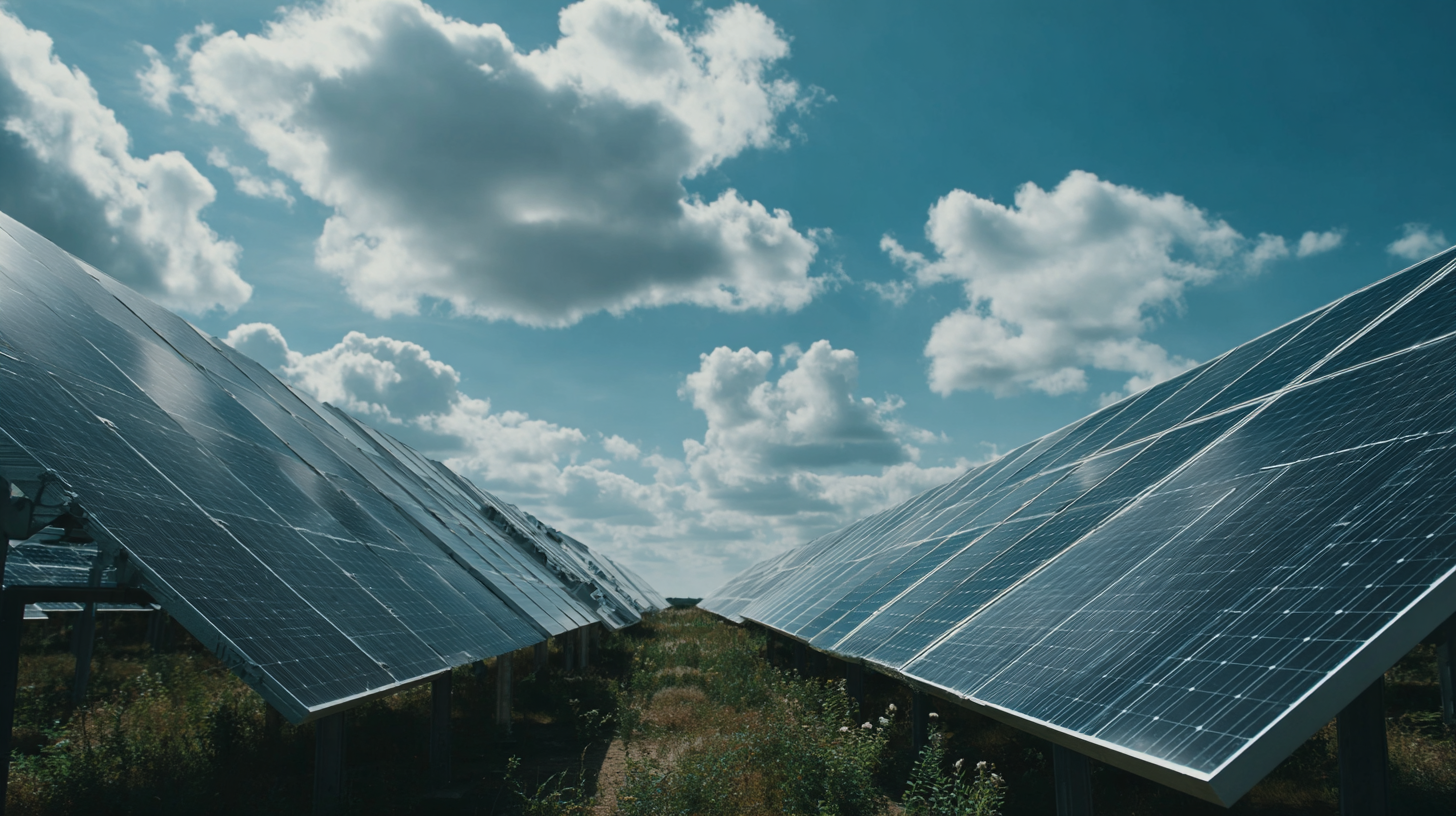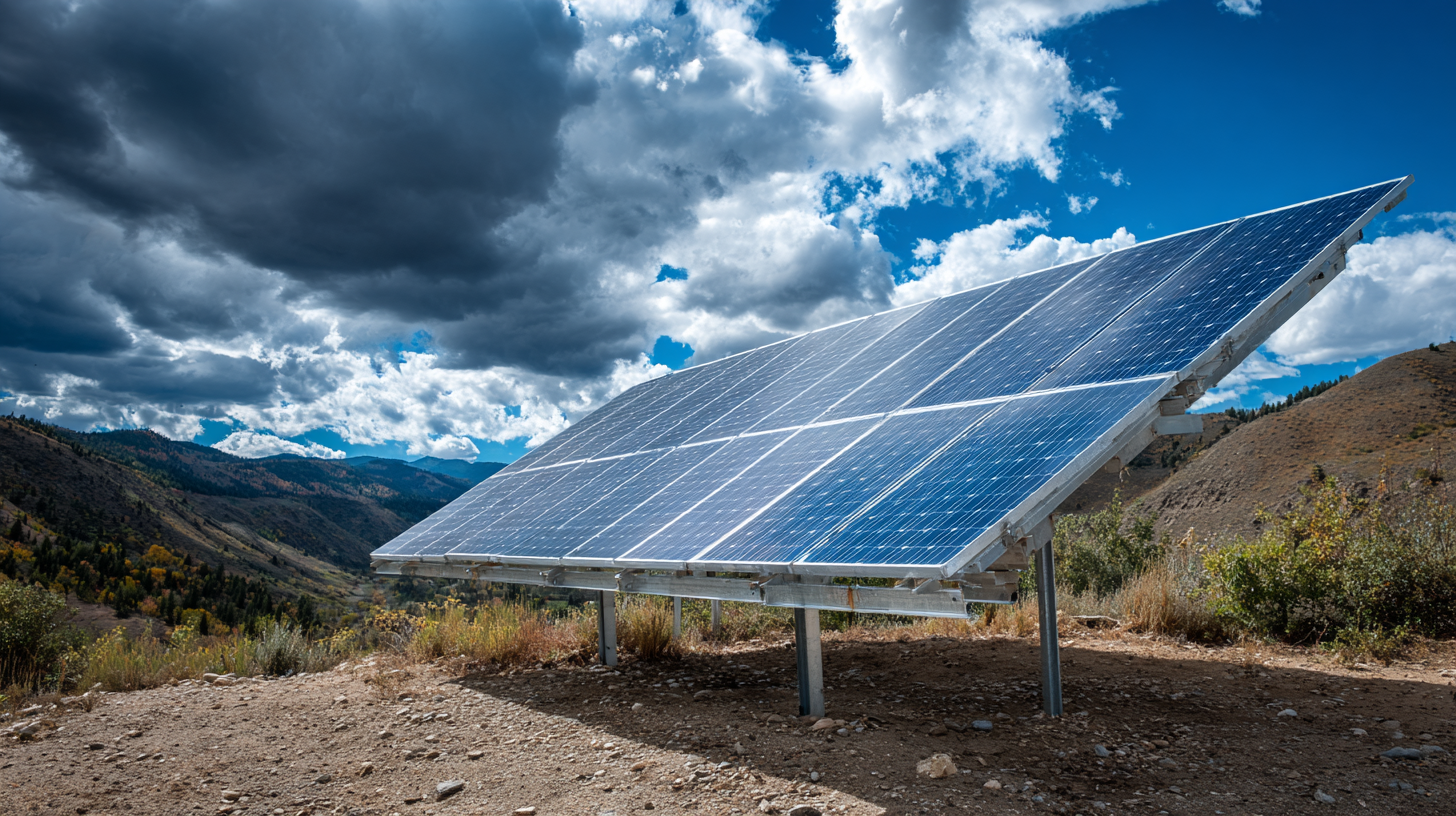Blog
- Home
- Blog
Future of Best Green Energy Solar in 2025 Innovative Solutions for Global Procurement Challenges
As we look ahead to 2025, the landscape of Green Energy Solar is poised for transformative growth, driven by innovative solutions to global procurement challenges. According to the International Renewable Energy Agency (IRENA), the global solar power capacity is anticipated to reach over 3,000 gigawatts by 2025, representing a significant increase in its contribution to the energy mix. This surge is propelled by advancements in technology, cost reductions, and the accelerating shift towards sustainable energy sources. Moreover, Chinese manufacturers are becoming increasingly pivotal in meeting this demand, providing high-quality solar products that emphasize efficiency and durability. The combination of competitive pricing and cutting-edge technology from these factories positions them as key players in the global market. Embracing these innovations will not only facilitate the expansion of solar energy adoption but also enhance energy security and environmental sustainability worldwide.

Emerging Technologies Revolutionizing Solar Energy Procurement in 2025
As we approach 2025, the solar energy landscape is undergoing a significant transformation, driven by emerging technologies that are revolutionizing procurement practices. Innovations such as blockchain and artificial intelligence are streamlining the supply chain, enhancing transparency, and reducing costs. Blockchain technology enables secure and traceable transactions, ensuring that the procurement process is not only efficient but also trustworthy. This level of transparency is vital in fostering strong relationships between suppliers and buyers, paving the way for more sustainable practices in the industry.
In addition, the integration of AI in forecasting demand and managing resources is becoming increasingly important. By analyzing historical data and current trends, AI algorithms can help companies make informed decisions about procurement strategies, minimizing waste and optimizing inventory levels. Moreover, the use of advanced solar panel manufacturing techniques, coupled with smart grid technology, is enabling quicker adaptation to market changes, allowing companies to respond instantly to new opportunities and challenges in the global energy sector. These advancements are setting the stage for a more resilient and responsive solar energy procurement ecosystem by 2025.
Future of Best Green Energy Solar in 2025
Strategic Partnerships: Collaborating for Sustainable Solar Solutions
The evolution of solar energy in the coming years will heavily rely on strategic partnerships that foster collaboration across the industry. According to a recent report by the International Renewable Energy Agency (IRENA), global solar capacity is projected to exceed 4,000 GW by 2025, emphasizing the need for cooperative efforts among stakeholders to meet increasing demand. Strategic partnerships can streamline procurement processes, reduce costs, and enhance innovation, allowing companies to leverage their strengths and resources effectively.
Collaborating for sustainable solar solutions also involves engaging with local communities and governments to address procurement challenges. A study by the Global Renewable Energy Index highlights that over 60% of solar projects face delays due to supply chain issues and regulatory hurdles. By forming alliances with local suppliers and participating in public-private partnerships, companies can navigate these complexities more efficiently. This collaborative approach not only bolsters project timelines but also ensures that sustainability remains at the forefront of development efforts, ultimately leading to more resilient and efficient solar energy solutions.
Future of Best Green Energy Solar in 2025 Innovative Solutions for Global Procurement Challenges - Strategic Partnerships: Collaborating for Sustainable Solar Solutions
| Dimension | 2025 Targets | Current Trends | Strategic Partnerships |
|---|---|---|---|
| Solar Panel Efficiency (%) | 24 | Increasing focus on monocrystalline technology | Partnerships with R&D institutions |
| Global Solar Capacity (GW) | 1200 | Rapid growth in emerging markets | Collaborations with local governments |
| Cost Reduction (% by 2025) | 30 | Advancements in manufacturing technologies | Joint ventures with manufacturers |
| Grid Integration Solutions | 60% | Focus on battery storage technology | Alliances with tech startups |
| Sustainability Certifications | 80% | Growing emphasis on ESG compliance | Partnerships with certification bodies |
Cost-Effective Innovations in Solar Panel Production and Distribution
As we look ahead to 2025, the solar energy industry is on the brink of significant transformation, particularly in the realm of cost-effective innovations in solar panel production and distribution. The ever-increasing global demand for renewable energy coupled with the urgent need to reduce carbon footprints have propelled companies to explore more efficient manufacturing processes. By incorporating advanced technologies such as automation and artificial intelligence, manufacturers can enhance the precision and efficiency of solar panel production, thereby decreasing costs while improving quality.
Moreover, the distribution of solar panels is being revolutionized through innovative logistics solutions. The rise of digital platforms and supply chain management software is enabling manufacturers to streamline operations and ensure timely delivery of products. This not only reduces transportation costs but also minimizes delays, making solar energy more accessible to a broader audience. As companies focus on developing localized production strategies and sustainable supply chains, the barriers related to global procurement can be significantly lowered, paving the way for a greener and more efficient energy future.
Addressing Supply Chain Disruptions in Green Energy Procurement
 Supply chain disruptions have become a critical challenge in the green energy sector, particularly regarding the procurement of innovative materials necessary for solar energy technology. Advancements in technology and a growing focus on sustainability are reshaping industries and pushing the boundaries of what’s possible. For instance, the metal forging industry is rapidly evolving, driven by the demand for high-performance materials like nickel. This metal plays a vital role in the hydrogen energy revolution, serving as a key component in manufacturing devices that store and transport hydrogen efficiently.
Supply chain disruptions have become a critical challenge in the green energy sector, particularly regarding the procurement of innovative materials necessary for solar energy technology. Advancements in technology and a growing focus on sustainability are reshaping industries and pushing the boundaries of what’s possible. For instance, the metal forging industry is rapidly evolving, driven by the demand for high-performance materials like nickel. This metal plays a vital role in the hydrogen energy revolution, serving as a key component in manufacturing devices that store and transport hydrogen efficiently.
The commitment to sustainable practices is leading to innovative solutions that address these procurement challenges. As companies increasingly prioritize green manufacturing processes, they are not only meeting regulatory requirements but also aligning with the market’s shift towards eco-friendly solutions. The integration of smart technologies and resilient supply chains in the green energy sector will be crucial in overcoming existing hurdles and facilitating the growth of solar energy initiatives. As we look toward 2025, the intersection of technology, sustainability, and evolving market demands will undoubtedly transform global procurement strategies, making the transition to renewable energy sources more viable than ever.
Regulatory Trends Impacting Solar Energy Adoption Globally in 2025
The solar energy landscape is rapidly evolving, especially as we approach 2025. Regulatory trends play a significant role in shaping the global adoption of solar power. Many countries are implementing stricter policies to meet climate goals, which can either facilitate or hinder solar energy projects. For instance, incentives such as tax credits and feed-in tariffs are becoming more common in regions prioritizing renewable energy investments. However, it is crucial for stakeholders to navigate the complexities of local regulations to effectively capitalize on these opportunities.

One tip for businesses looking to invest in solar energy is to stay informed about changes in legislation. Monitoring policy updates can provide insights into potential funding opportunities or compliance requirements. Additionally, engaging with local governments can foster collaboration that ensures projects align with community goals and regulatory conditions.
Another tip is to adopt innovative procurement practices that might address challenges presented by new regulations. By leveraging technology and analytics, companies can streamline the sourcing process for solar materials, ensuring they meet regulatory standards while optimizing costs. This proactive approach not only enhances project feasibility but also positions businesses as leaders in the renewable energy sector.